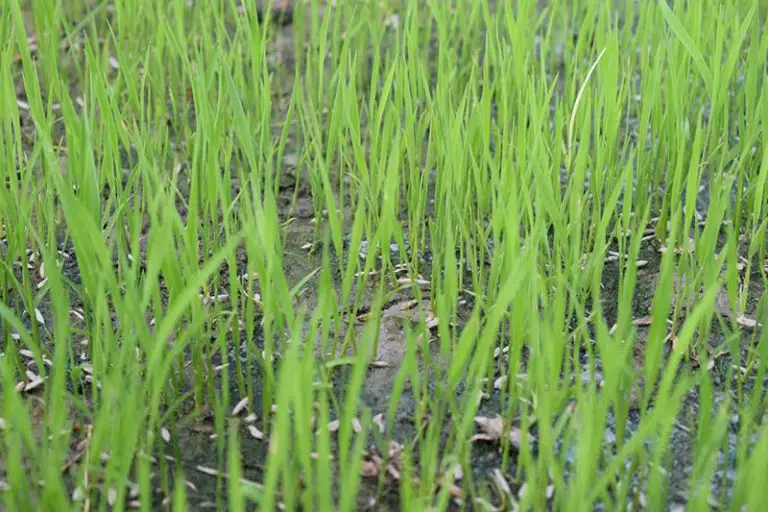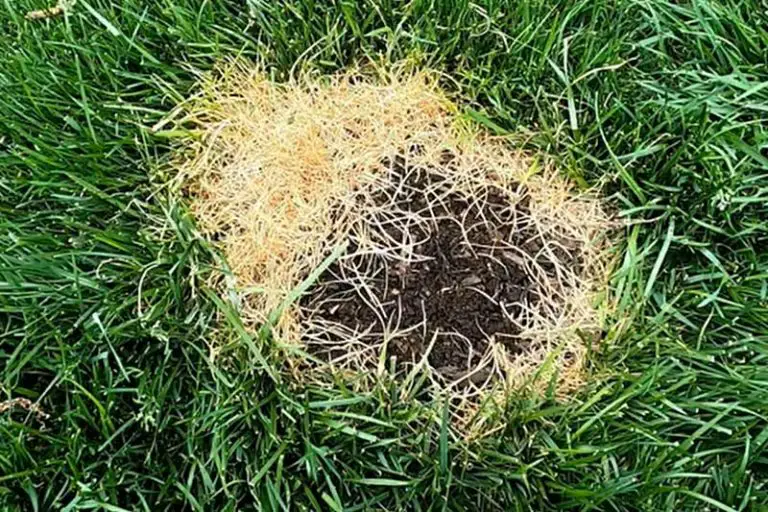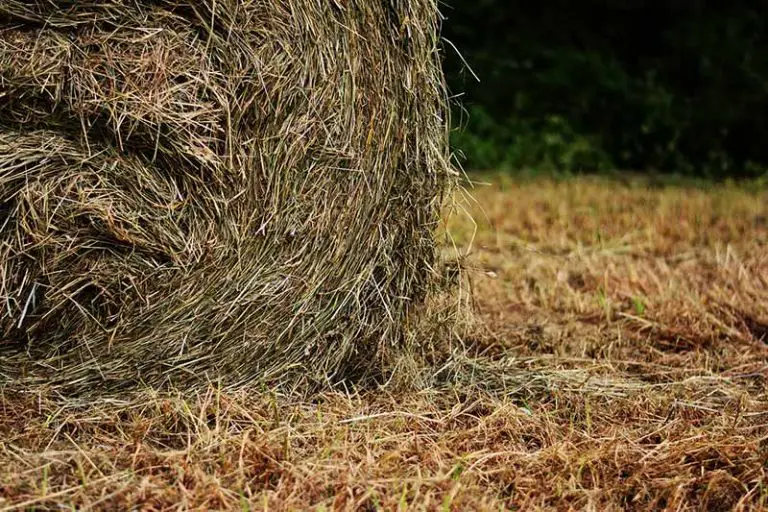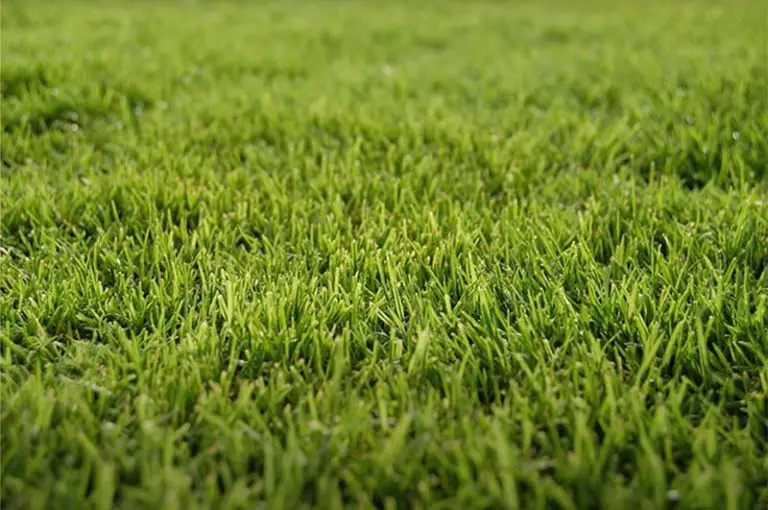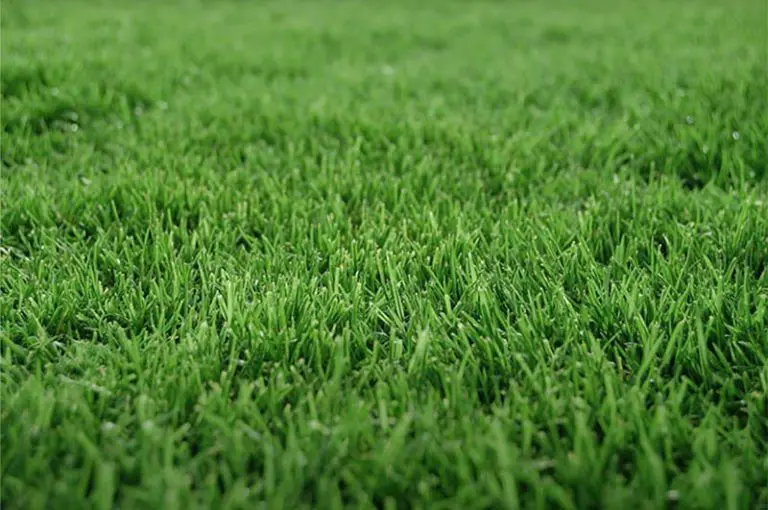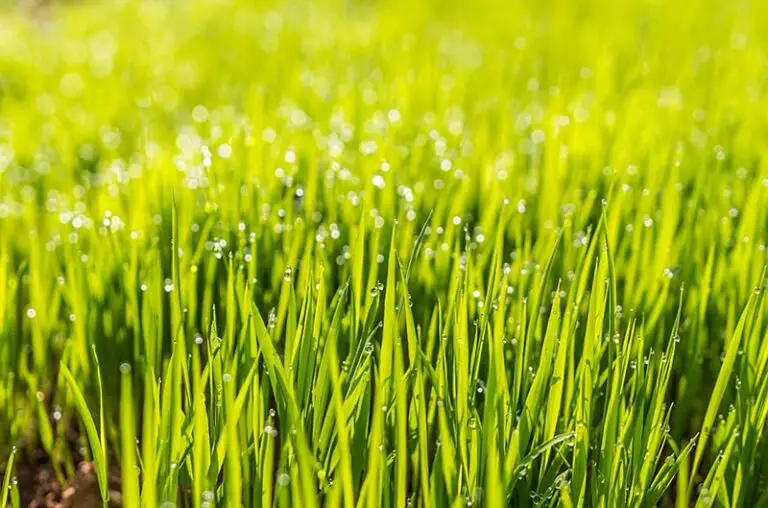Peat Moss or Straw for Grass Seed – Which Grass Cover is Best?
Adding a grass seed cover is essential if you want to see the highest germination rates from your seeding efforts. You have a few different options at your disposal when choosing a cover for your grass seed; materials include compost, grass clippings, peat moss, and straw. Both peat moss and straw are two of the most common choices, offering similar benefits, but each having their own drawbacks to consider.
In terms of improving water retention and germination rates, peat moss is the better choice; however, peat moss is a non-sustainable resource and may also negatively affect soil composition and acidity over time. Straw offers much of the same benefits as peat moss, is more environmentally friendly, and does not impact soil health; although, comparatively, straw is not as effective at improving germination rates as peat moss.
Why Should You Cover Grass Seed?
Although it is possible to grow grass uncovered, it’s best practice to cover grass seed after seeding or overseeding your lawn. Uncovered grass seed is highly vulnerable to external conditions, such as weather and wildlife, that can impact germination or prevent it entirely. A grass seed cover provides protection for your grass seeds to maintain their growth at their most vulnerable stage.
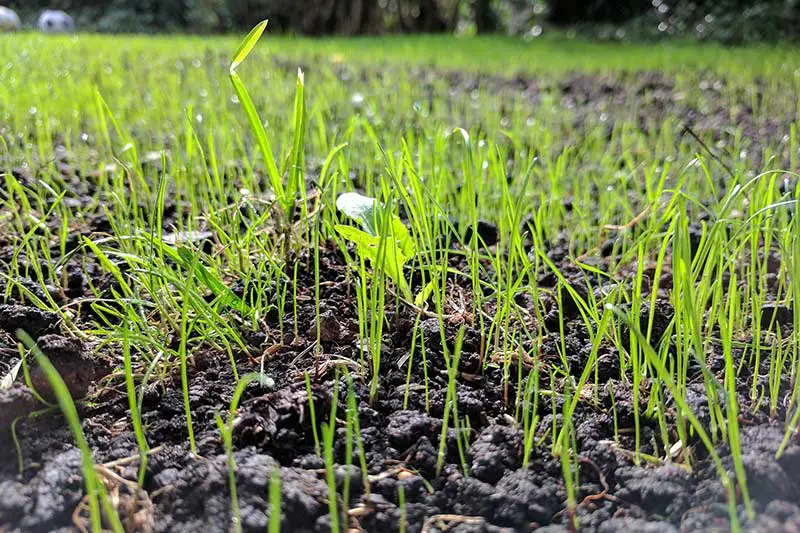
It isn’t a good idea to just sprinkle your grass seed on bare soil and hope for the best. Left uncovered, the grass seed is completely exposed; your seed is likely to dry out, be blown or washed away, or eaten by birds. This will result in a lower germination rate and a patchy lawn when the new grass starts to grow in. Adding a grass seed cover, however, creates a protective layer over the vulnerable seed. You will see a lot more healthy sprouts by adding this cover straight after seeding.
What Can You Use to Cover Grass Seed?
One of the most common materials used to cover grass seed is straw. There are several alternatives to straw that you can use as an effective grass seed cover; these include compost, grass clippings, sawdust, pine straw, and peat moss. All of these materials have their own benefits and drawbacks to consider before you use them on your new grass.
When deciding which grass seed cover would be best for your lawn, you must ask whether the material would serve two essential purposes.
Firstly, the cover must be able to create an enclosed environment that still allows water to pass through the barrier. This will help the planting area to retain moisture without blocking water from reaching the soil. Secondly, the material should be of organic origin; as the organic matter breaks down, it will act like a slow-release organic fertilizer, releasing nutrients to your new grass. Providing the material fits both of the criteria mentioned above, you can use it to cover grass seed.
What is the Best Grass Seed Cover?
In general, compost is the best material to cover grass seed. Compost will promote the fast and healthy germination of your new grass without introducing weed seeds to the soil. If you have it as an option, you should use compost to cover your newly sown seed.
As a grass cover, compost is an ideal substance to add to your lawn. It creates a protective layer that keeps seed in place, preventing seedlings being lost to wind, rain, or hungry wildlife. A layer of compost will help the planting area to retain moisture and maintain a consistent temperature; being an organic material, the compost will also act like a nutrient-rich slow-release fertilizer as it breaks down. As a result, your seedlings will have the ideal conditions to grow into healthy mature grass plants.
Compost is a sustainable material that you can acquire for free or for a very low price. If you don’t have a compost pile or bin at home, you can purchase high-quality compost from your local garden store. Unlike straw, high-quality compost contains no weed seeds and therefore will not introduce any weeds to your new lawn. Compost is also cheaper than peat moss to purchase commercially. All of these factors are what make compost the superior choice of grass seed cover to use after seeding.
Comparing Peat Moss vs Straw As a Grass Seed Cover
Two of the most common materials used to cover grass seed are peat moss and straw. As we’ve explained, compost is overall the best type of cover for new grass; however, peat moss and straw are two strong contenders that you should still consider when seeding your new lawn. We explain the pros and cons of both peat moss and straw below.
Peat Moss as a Grass Seed Cover
Harvested from peat bogs, peat moss is a soil amendment made from decomposed organic materials from within the bogs. Peat moss is a dark brown, fibrous substance, being a product of the decomposition of sphagnum moss and other organic matter in the bogs over thousands of years.
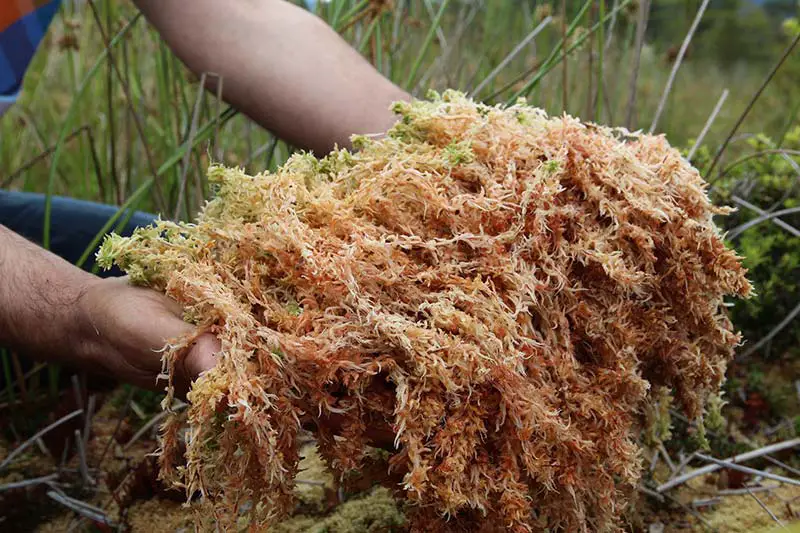
Pros of Using Peat Moss to Cover Grass Seed
- Peat Moss is a Sterile Amendment – Peat moss is typically sold as a sterilized product. The sterilization process eliminates all fungal spores, disease-causing organisms, and weed seeds from the peat moss. As such, the sterilization process prevents the introduction of these harmful substances to your delicate grass seed. Straw often will contain weed seeds and other contaminants; although you can purchase sterilized straw, it’s hard to come by and usually much more expensive.
- Peat Moss Has Superior Water Retention – Compared to straw, peat moss has a superior ability to retain moisture. The absorbent texture of peat moss soaks up water like a sponge; it has the capacity to absorb and retain up to 10x of its weight in water. This creates a planting area with perpetual moisture, providing the ideal growing conditions for new grass seed. Peat moss eases the process of watering grass seed by helping to keep the soil consistently moist throughout germination.
- Peat Moss Won’t Smother Grass Seed – If you break it up and apply it correctly, peat moss won’t form mats or smother the grass seed. This is a common problem with other types of grass seed cover; for instance, grass clippings are very prone to clumping and forming mats when wet. Peat moss, on the other hand, provides all the benefits of a grass cover without smothering the seed.
- Peat Moss is Light and Easy to Transport – Peat moss is dehydrated for the purposes of shipping and storage, making it very light in weight. As a result, the substance is very easy to purchase and transport to your yard in large quantities. This is a huge benefit if you’re seeding your lawn yourself as it will ease the labor involved in the process.
Cons of Using Peat Moss to Cover Grass Seed
- Peat Moss is Not a Sustainable Resource – The biggest disadvantage of using peat moss to cover grass seed is that it’s a non-sustainable resource. Peat moss only grows at a rate of 1 millimeter per year, and is currently harvested at a rate that far exceeds this growth. The harvesting of ancient peat bogs depends on the drainage and destruction of wetlands; as a result, this is causing the destruction of habitats for wildlife and a crucial element of the wider ecosystem. With the use of peat moss set to be banned in many countries, it isn’t a reliable substance for long-term gardening strategies. It also isn’t a great choice for anyone conscientious of the environmental impact of their lawn care practices.
- Peat Moss Can Cause Hydrophobic Soil – The water-retentive properties of peat moss give this amendment the potential to become hydrophobic. A thick layer of peat moss allowed to dry out will create a water-repellant barrier over the soil. This layer will block water from reaching the soil surface, depriving your grass seeds of moisture when they need it most.
- Peat Moss is Prone to Erosion – Due to its light, fluffy texture, peat moss is prone to erosion by wind and water. When dry, a heavy wind can easily carry off peat moss, while water from rainfall or irrigation can wash it away. The risk of erosion is greater if your lawn is uneven from neglecting to grade and level the ground when preparing your soil for seed.
- Peat Moss Can Cause Soil Acidity – Peat moss is an acidifying substance that will lower the pH of your soil. Using this amendment may therefore make the soil too acidic for grass to grow. The more peat moss you add to your lawn, the more dramatic the pH change will be; when soil pH falls below 6.5, it will impede the growth of any grasses in the planting area.
- Peat Moss Can Reduce Soil Quality – In terms of fertility and microbial activity, peat moss can reduce the overall quality of your soil. This substance is actually known to be antimicrobial, meaning it inhibits the presence of lawn-friendly microbes necessary for healthy, fertile soil. Peat moss also provides no nutrients to the soil as it breaks down over time.
Straw as a Grass Seed Cover
Straw is an agricultural byproduct of the harvesting of grains like wheat and barley; the stems left behind from these harvests are what then become straw. This is another very common material used to cover grass seed.

Pros of Using Straw to Cover Grass Seed
- Straw Won’t Affect Soil pH and Improves Composition – Unlike peat moss, straw will have no effect on the soil’s pH level or composition. Where peat moss inhibits microbial growth, straw will actually promote it. The straw will add to the organic matter in your soil as it breaks down; this will make the soil more loamy, which is the best soil type for growing grass.
- Straw Can Provide Nutrients to Soil – Another benefit of straw over peat moss is that it will add nutrients to the planting area over time. As it decomposes, the straw will behave like a slow-release fertilizer to gradually release nutrients in the surrounding soil.
- Straw Has Superior Staying-Power – Straw is bulkier and heavier than peat moss, and is therefore less likely to wash or blow away. This characteristic makes straw a better choice to cover grass seed on hills or sloped areas of soil; it will better hold the seed and any amendments in place on uneven ground for months after application.
- Straw Offers Sufficient Moisture Retention – Although peat moss is superior in this category, straw still offers a reasonable ability to help the soil retain moisture. Straw promotes better moisture retention in a different way to peat moss; instead of behaving like a sponge, straw acts like a barrier that locks in moisture by reducing water evaporation.
- Straw is Typically Less Expensive than Peat Moss – Straw is typically cheaper to purchase than peat moss. With that said, sterilized straw will be significantly more expensive than unsterilized straw; purchasing sterilized straw is the only way you can guarantee the cover won’t introduce weed seeds to your new lawn.
- Straw is a Sustainable Resource – As it is a sustainable resource, straw is much more environmentally-friendly than peat moss. It is merely a byproduct of the harvesting of other agricultural crops; straw is therefore readily available with little environmental impact involved in its harvesting.
Cons of Using Straw to Cover Grass Seed
- Straw Often Contains Weed Seeds – The main disadvantage of straw is that it very often contains weed seeds. When using straw to cover grass seed, it’s common for invasive weeds and crop plants like wheat to pop up among your new grass. These invasive plants will steal water and nutrients from your seedlings when they need them most.
- Straw Can Form a Mat that Smothers Grass Seeds – Due to its bulkier texture, straw is more prone to matting than peat moss. This can impede the growth of your new grass, potentially even killing the tender seedlings by smothering them.
- Straw Doesn’t Offer the Best Moisture Retention – While it does enhance the soil’s moisture retention to some degree, straw is not the best cover for this purpose. Straw is likely to dry out on hot days; as grass seed can only go 12 to 24 hours without water, your seedlings will likely die if the straw dries out the planting area for too long.
Is it Better to Use Peat Moss or Straw for Grass Seed?
To summarize, it’s better to use peat moss rather than straw to cover grass seed if you want an improved germination rate and better water retention. On the other hand, if you’re conscious about the environment, then straw is the better choice instead of peat moss. With all of that in mind, compost is ultimately the best grass seed cover over both straw and peat moss.

